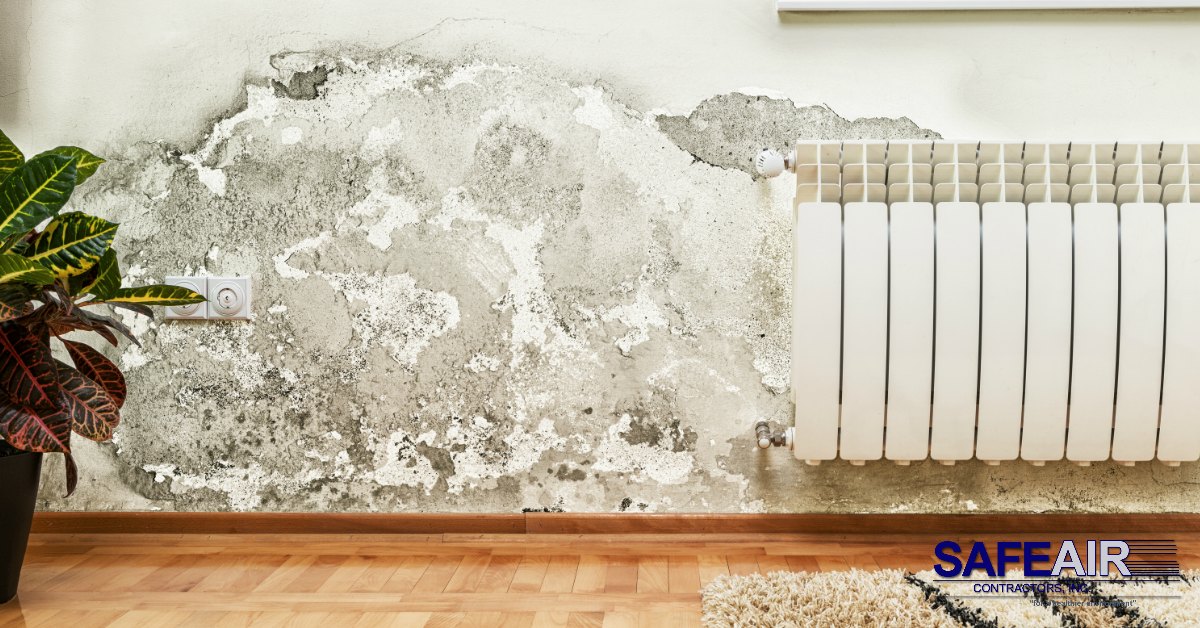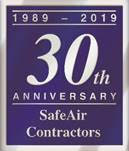Getting rid of mold isn’t a job that anyone enjoys which is why a lot of people postpone mold cleanup for days, weeks, or even months! There is a problem with this type of attitude though because the longer mold is allowed to grow in your home, the more serious the problem becomes. Does it really matter if one of the walls in your home is turning green, though? Especially if you don’t use that room very often! Well, the answer is a resounding YES!
Getting Rid of Mold: When Should You Start Mold Removal?
The first thing you need to understand about mold is that there are many many types of mold and more than a few of them can pose serious health risks to you, your family, your friends, and your employees if you are a business owner.
How bad can it be, though? Mold won’t take over your whole house and make you sick overnight, will it?
The thing about mold is that by the time you notice signs of it being in your home, it’s already been there long enough to establish residence. That means that you and your family have been breathing in mold spores from the very first day that that mold started creeping in.
How Fast Can Mold Grow?
Let’s take a quick look at the timeline of your average household mold infestation…
If environmental conditions are perfect, it can take just 24 to 48 hours for mold to germinate and grow. In the average home, however, it takes between three to twelve days for mold to germinate and grow. Within 18 to 21 days, the mold becomes visible on your walls or other soft or porous materials in your home.
Let’s think about this for a moment…
By the time you SEE mold growing in your home, that mold has already been growing for as long as three weeks! That’s three weeks of breathing in mold spores.
How Bad Can it Be to Breathe in Mold?
It’s just a few mold spores, right? How bad can it be? After all, penicillin is mold…isn’t it? Well yes and no.
Penicillin is a particular type of mold that is developed under sterile conditions. The mold that is growing in your home can be any number of mold varieties and some of them can actually be deadly!
Alternaria
Alternaria is a type of mold that you will most often recognize in the dimly lit areas of your home where dampness is common, for example, the darkest corner of your shower or those tiny nooks of your sink. While Alternaria isn’t deadly to most people, it can cause asthma attacks in asthmatics and cause life-threatening reactions in individuals who are allergic to it.
Aspergillus
Aspergillus is another common type of mold found in homes and breathing in spores can cause anything from minor respiratory damage to lung inflammation, severe respiratory infection, and allergic reactions.
Aureobasidium
Aureobasidium mold is a mold that is fairly common and is most often seen on wallpapers, painted walls, and wooden furniture surfaces. Although it may look innocent with its pink coloration, the fact is that Aureobasidium is such a common mold that most people develop some type of reaction to it and many of those reactions are much more severe than reactions to other mold types.
Chaetomium
When the drywall in your home gets damaged by water, you will most likely notice Chaetomium mold. This type of mold has a very musty smell to it and can cause respiratory distress particularly in individuals with existing respiratory problems.
Cladosporium
When you notice mold on your carpets and on fabric, you are most likely looking at Cladosporium. Exposure to Cladosporidium can, like most molds cause respiratory problems, but it can also lead to breathing difficulties.
Fusarium
Fusarium is another mold that tends towards carpets and fabric, but this mold doesn’t just cause allergic reactions, it is also known for causing respiratory infections as well as inflammation.
Stachybotrys Chartarum
Black mold or Stachybotrys chartarum is most often found in areas that remain damp such as air conditioning ducts. Black mold creates mycotoxins that are responsible for the development of breathing problems, depression, sinus infections, fatigue, and asthma attacks.
Trichoderma
Another mold that found in damp areas of your home, Trichoderma prefers damp carpeting as well as wallpaper. Like black mold, Trichoderma creates mycotoxins.
Ulocladium
Ulocladium is a mold that is found outside and inside your home. This mold prefers areas that have been flooded. Ulocladium mold can cause allergic reactions and infections.
Need Help Getting Rid of Mold?
If you live in Ohio and need help getting rid of mold from your home or your business building, give us a call here at SafeAir Contractors. We have a professionally licensed team who are fully trained to address molds of all types and get your home back to being a lovely cozy home again! Just dial 440-639-1191 and let us know how we can help and we’ll take care of the rest!


